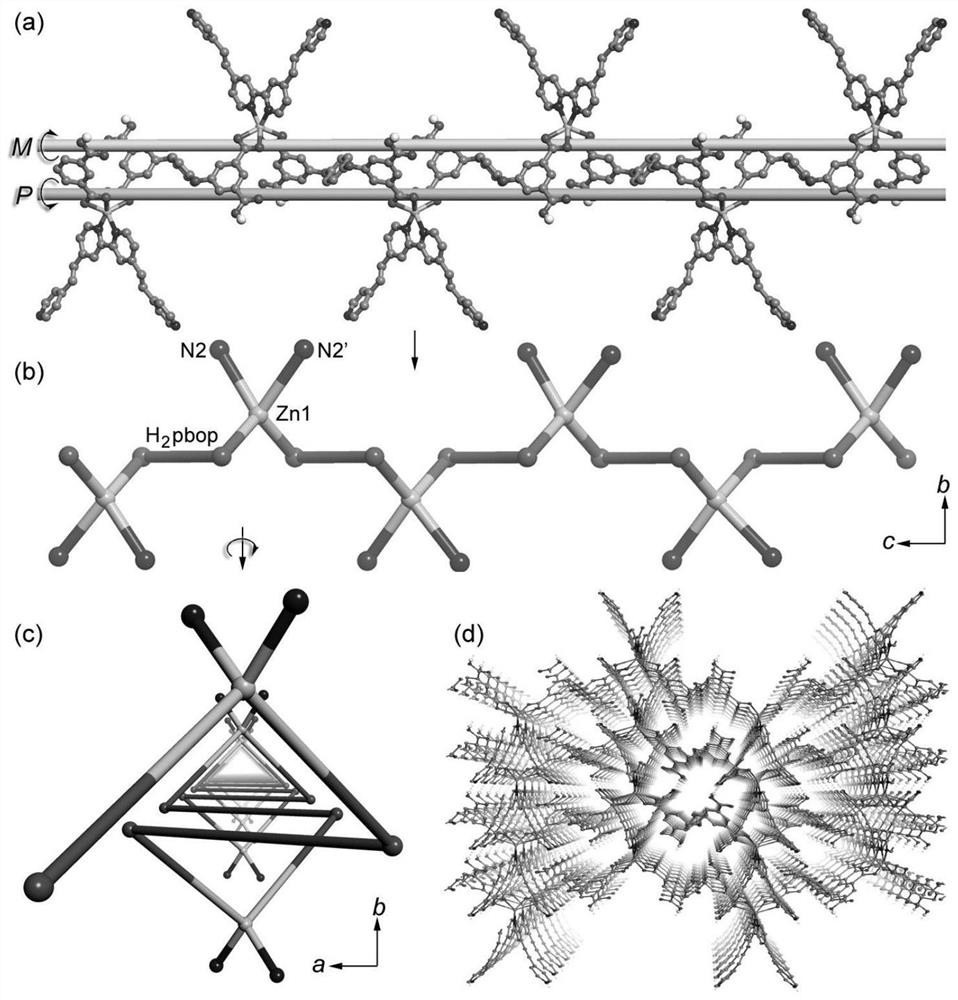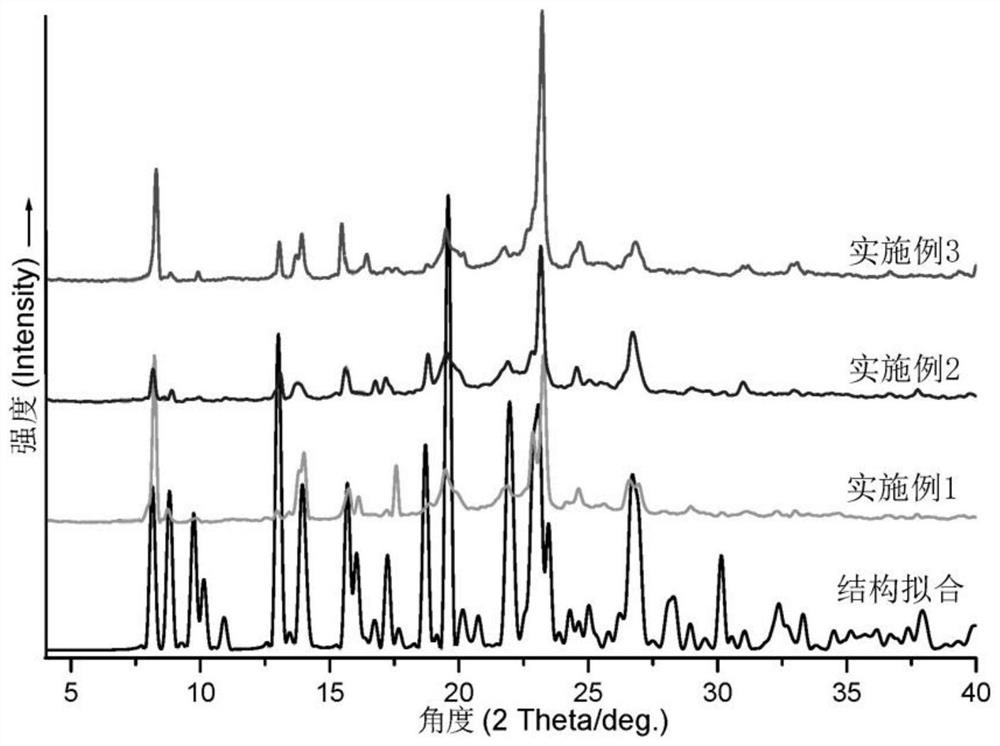Zinc-Organic Coordination Polymer Containing Internal Elimination Helical Chain and Its Preparation and Application
A coordination polymer and coordination polymerization technology, applied in chemical instruments and methods, fluorescence/phosphorescence, instruments, etc., can solve problems such as topology structure and unpredictable performance, and achieve high thermal stability
- Summary
- Abstract
- Description
- Claims
- Application Information
AI Technical Summary
Problems solved by technology
Method used
Image
Examples
Embodiment 1
[0031] Take the material according to the following specific mass or volume: H 4 pbop (21.9mg, 0.05mmol), 4-ppp (9.0mg, 0.025mmol), Zn(NO 3 ) 2 ·6H 2 O (29.7 mg, 0.1 mmol), CH 3 CN (1 mL) and H 2 O (9 mL). Put the above materials in a 25mL reaction kettle, stir for about 10min, heat up to 170°C, react for 3d, and cool to room temperature naturally to obtain blocky crystal samples, which are filtered from the mother liquor, washed with distilled water, and naturally cooled in the air at room temperature dry.
[0032] To the prepared crystal sample of the zinc-organic coordination polymer containing internal elimination helical chains, the Shimadzu XRD-6100 type X-ray diffractometer is used to carry out the powder diffraction test (see image 3 , abscissa-angle; ordinate-diffraction intensity), the peak of the test spectrum and the peak of the crystal structure fitting spectrum can be well matched (software Mercury), indicating that the structure of the obtained crystal sa...
Embodiment 2
[0047] Take the material according to the following specific mass or volume: H 4 pbop (21.9mg, 0.05mmol), 4-ppp (18.1mg, 0.05mmol), Zn(NO 3 ) 2 ·6H 2 O (29.7 mg, 0.1 mmol), H 2 O (10 mL). Put the above materials in a 25mL reactor, stir for 30min, heat up to 140°C, react for 5d, and cool to room temperature naturally to obtain massive crystals, which are filtered out from the mother liquor, washed with distilled water, and dried naturally in air at room temperature.
[0048] Product powder X-ray diffraction characterization (see image 3 ), the data obtained are similar to those in Example 1. It shows that the crystal structure prepared by Example 2 does not change, and the product has high purity.
[0049] This example was repeated several times, and the actual mass of the coordination polymer was maintained at 22.4-27.3 mg, and the yield calculated based on the amount of 4-ppp was 49.8%-60.7%.
Embodiment 3
[0051] Take the material according to the following specific mass or volume: H 4 pbop (21.9mg, 0.05mmol), 4-ppp (9.0mg, 0.025mmol), Zn(NO 3 ) 2 ·6H 2 O (15.0 mg, 0.05 mmol), CH 3 CN (3mL) and H 2 O (7 mL). Put the above materials in a 25mL reactor, stir for 30min, heat up to 160°C, react for 4d, and cool to room temperature naturally to obtain massive crystals, which are filtered out from the mother liquor, washed with distilled water, and dried naturally in air at room temperature.
[0052] Product powder X-ray diffraction characterization (see image 3 ), the data obtained are similar to those in Example 1. It shows that the crystal structure prepared by Example 3 does not change and the product is relatively pure.
[0053] This example was repeated several times, and the actual mass of the coordination polymer was maintained at 16.6-19.4 mg, and the yield calculated based on the amount of 4-ppp was 73.8%-86.2%.
PUM
 Login to View More
Login to View More Abstract
Description
Claims
Application Information
 Login to View More
Login to View More - R&D
- Intellectual Property
- Life Sciences
- Materials
- Tech Scout
- Unparalleled Data Quality
- Higher Quality Content
- 60% Fewer Hallucinations
Browse by: Latest US Patents, China's latest patents, Technical Efficacy Thesaurus, Application Domain, Technology Topic, Popular Technical Reports.
© 2025 PatSnap. All rights reserved.Legal|Privacy policy|Modern Slavery Act Transparency Statement|Sitemap|About US| Contact US: help@patsnap.com



